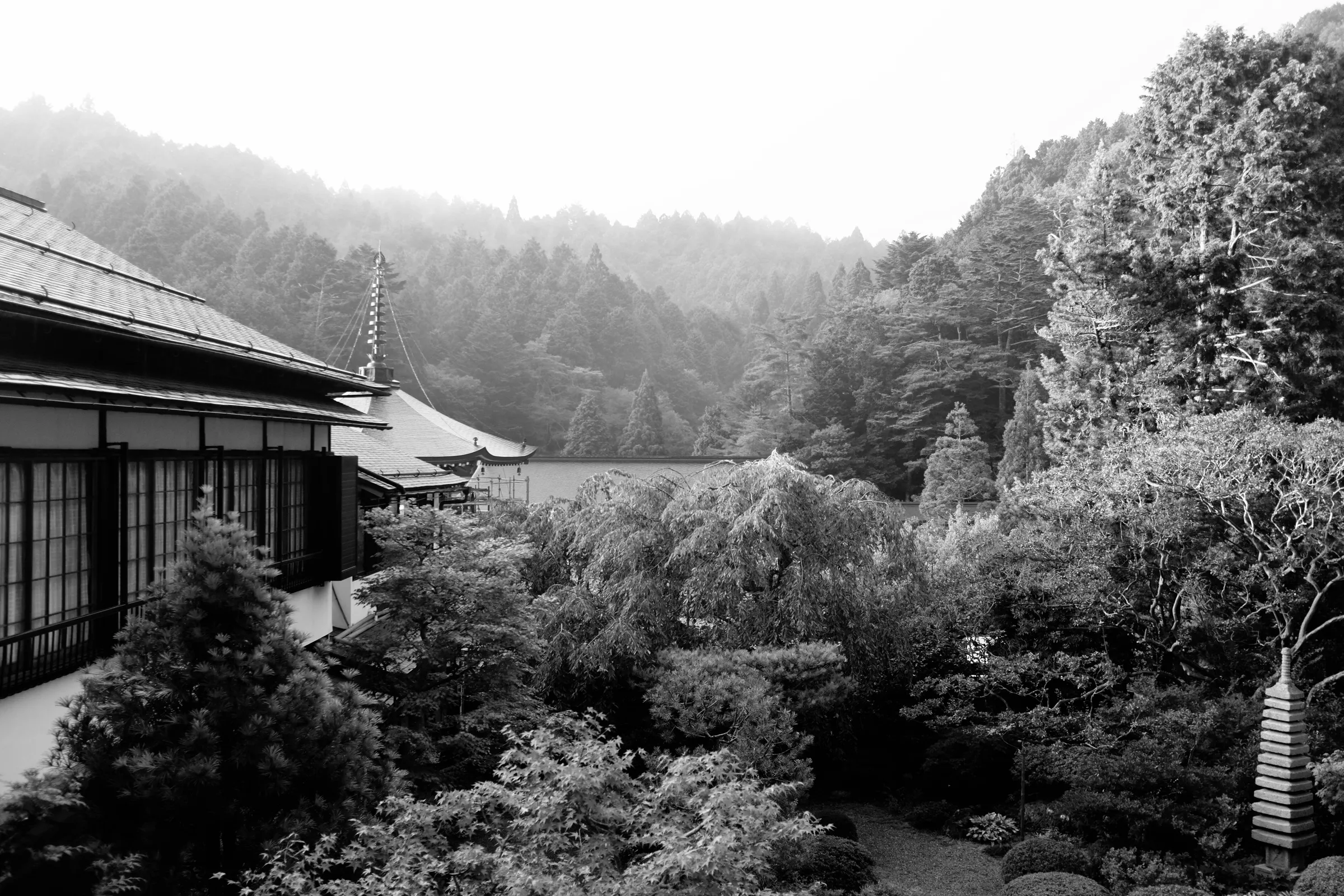0018 Koyason
There is a train that leaves Osaka, carrying passengers south and eventually making its way to a station just across the Kinokawa river.
There is a cable car, which leaves from that train station, that slowly climbs the mountain at an unlikely angle, until it reaches a smaller station.
There is a half-empty bus whose driver deftly navigates winding, narrow roads as it enters a town and begins to make more frequent stops along a wider road, dotted with temples, vans, and small trucks.
One of the temples has an entranceway about seven, large stones wide, pitched at a slight incline toward the back gate and an open, gray field of meticulously raked gravel. Bright green trees and shrubs line the perimeter along a path to the door.
There is a smiling, soft-spoken fellow at the front desk to greet you by name and explain everything that merits an explanation before leading you to the stairs that give and creak under the weight of three people, two carrying modestly-sized backpacks.
And then there is the room where the floors are silent and the tatami mats are soft underfoot. On the far end, there is a wall that is also a door, made of wood and paper, that slides open and reveals a smaller sitting area with a well-polished wooden floor. There is a table that sits between two large, low chairs made of wicker and bent wood.
The two chairs face each other, as if in a conversation, somehow ignoring the view from the window behind them.
And there is that window behind those chairs: a sprawling, four-panel window that looks out over a courtyard and draws your eyes higher up the mountain, chasing the tree lines as they rise toward the sky.
